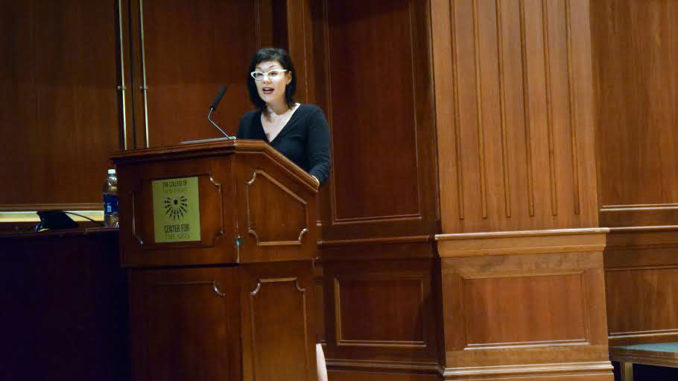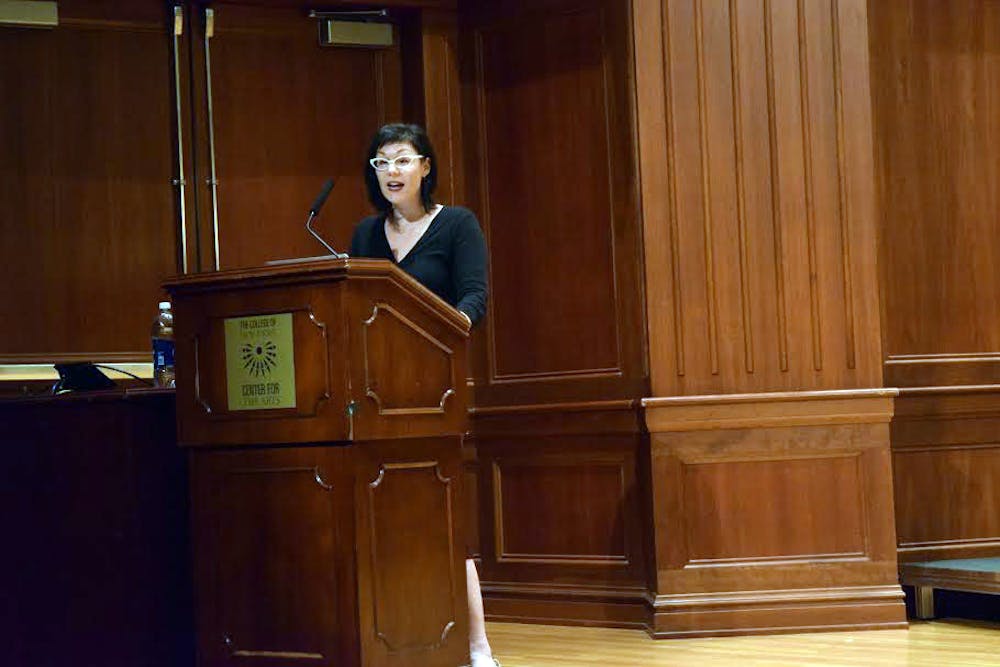By Mallory McBride
Correspondent
Students and faculty filled the seats of Mayo Concert Hall on Friday, Oct. 14, as the School of Arts and Communication prepared to kick off the department’s fourth Brown Bag event this semester.
James Day, assistant dean of Arts and Communication, took the stage to introduce the speaker, Carolina Blatt-Gross, an assistant professor of Art Education at the College.
“Carolina Blatt-Gross’s research is significant because it explores the fundamental issues for why people make art,” Day said. Blatt-Gross’s work also seeks to understand the interconnectedness between different disciplines of art.
Blatt-Gross, who earned her Ph.D. at the University of Georgia, began the program by posing a perplexing question: “When did you start making art?”
Whether it be with paint, crayons or non-traditional materials, like sticks and sand, Blatt-Gross realized that most people start making art at the same, young age. She also realized that, at some point, we stop making art.
“Our brains have evolved very little since the prehistoric days,” Blatt-Gross said, as she discussed a time when art served to bond people in rituals and gatherings. According to Blatt-Gross, the arts are a central part of human behavior, which date back many years.

With many questions in mind and a need for answers, Blatt-Gross set off to figure out if art is a part of human behavior and if formal education can suppress this behavior.
Blatt-Gross started a pilot study in a pre-kindergarten child development lab, where she performed studies in the classroom, as well as further studies in third grade classes at an urban public school. Her research can be found in the “International Journal of Education and the Arts” and a CNN article she wrote.
“Students frequently displayed and may prefer communicating themselves via artful behavior,” Blatt-Gross said. She also noticed that the third grade students, compared to those in pre-kindergarten, were not allowed as much access to materials or as much time to experiment with art.
“Art can help make education meaningful and memorable,” Blatt-Gross said. “I suggest that we embrace and encourage artful behaviors.”
As an educator herself, Blatt-Gross questioned whether asking her students to sit and listen to lectures was beneficial to them. For this reason, she includes creative activities into every course she teaches and allows space for artistic behavior in her classroom.
During the question and answer session that followed her lecture, Blatt-Gross was asked about the belittlement of art degrees, compared to those in the sciences. Her response was encouraging to art majors.
“I have always had a job in the arts,” she said. “The number of fields that depend on art degrees are abundant.”
Another student in the audience said his biggest fear is not being able to find a job after majoring in the arts. Blatt-Gross’s said with a little hard work and dedication, anyone can “make it happen.”
Freshman art education major Shayla Nolan asked Blatt-Gross if she had found any ways to incorporate art into lower income schools that may not have the money to provide materials to the students.
“One of the biggest takeaways from art is that you don’t need the most expensive paint or the nicest canvases,” Blatt-Gross said. Art can be made out of anything, and Blatt-Gross suggested that these schools can obtain materials through donations.
As the Brown Bag came to a close, Blatt-Gross had time for a few more questions.
“Have you stopped making art?” a student asked.
With a chuckle, Blatt-Gross responded, “During this study, I found that I didn’t have time to sit down and paint, so I started Flamenco dancing.”
While she shared her research, it was clear that Blatt-Gross won’t stop making art, or stop using it in her classroom, anytime soon.







